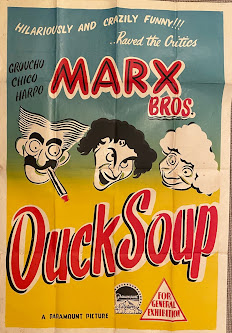"The pound of flesh which I demand of him Is deerely bought, 'tis mine, and I will have it." -- Shylock, The Merchant of VeniceIn the 1970s, without any scientific testing, a state medical examiner from Oklahoma concocted a three-drug cocktail for use in executions. The first drug, a sedative, causes unconsciousness so the inmate would feel no pain. The second drug induces muscle paralysis and respiratory arrest, while the third drug stops the heart. Among the many problems with this protocol is that by using a paralytic agent, there is no way to tell if the barbiturate is working effectively. In other words, if the inmate is paralyzed it can't be discerned whether he (or she) is truly unconscious or is simply unable to scream out in pain. This became an even more troubling problem when the drug initially used for sedation became unavailable, leaving states to scramble to find other even more unreliable alternatives.
Today the Supreme Court heard argument in the case of Glossip
v. Gross, to determine whether the sedative, midazolam
-- which was used in the so-called “botched” executions that occurred last year
(which I wrote about here), could reliably induce a deep enough state of unconsciousness before the other
drugs – which cause intense, severe pain – were injected. Or as Justice Kagan put it, would the drug's ineffectiveness cause the inmate to feel like “burning alive,
from the inside.”
What was most ghoulish about today's argument, however, was not the descriptions of executions or the hypothetical questions about burnings at the stake with inadequate anesthesia, but the blood lust of a majority of the Supreme Court.
The conservatives on the Court appeared far less concerned
about the excruciating pain caused by the latest untested three-drug cocktail
than for those poor state officials who have been forced to devise new methods of
execution because death penalty abolitionists have been
effective in persuading drug companies that their products shouldn’t be used to
kill people.
Justice Alito: “Is it
appropriate for the judiciary to countenance what amounts to a guerilla war
against the death penalty which consists of efforts to make it impossible for the
states to obtain drugs that could be used to carry out capital punishment with
little, if any, pain?”
Justice Scalia: Other drugs have been made unavailable “by the abolitionists putting pressure on the companies that manufacture them so that the states cannot obtain those other drugs. . . The abolitionists have rendered it impossible to get the 100 percent sure drugs, and you think we should not view that as relevant to the decision that you’re putting before us?”
Justice Roberts: “The case comes to us in a posture where
it’s recognized that your client is guilty of a capital offense, it’s
recognized that your client is eligible for the death penalty, that that has
been duly imposed. And yet you put us in
a position with your argument that he can’t be executed, even though he satisfies
all of those requirements. And you have
no suggested alternative that is more humane.”
Justice Kennedy asked counsel for the inmates to answer the question whether the resistance to the
death penalty was a factor that the Court should consider in weighing the
validity of a given protocol.
Second, the notion that the drug shortage is due solely to the
pressure put on drug companies by the anti-death penalty movement is not
accurate. It is also in large measure due to the fact that more evolved foreign countries where these drugs are being sought do not sanction the death penalty and have imposed restrictions on exporting drugs for such use.
But this should all be irrelevant to the question before the Court -- whether the use
of a particular method of execution creates a risk of pain sufficient to violate
the cruel and unusual punishment clause of the Eighth Amendment.
The answer should be obvious. And it is becoming obvious to more and more Americans who, as an editorial in the New York Times put it, "are finding that there is no form of state-sponsored killing that can be civilized or humane." According to the Times, "the search for more ways to kill may be losing steam as public views change. A recent poll by the Pew Research Center found that only 56 percent of Americans approve of capital punishment — the lowest level in four decades. Among Democrats the number is 40 percent."
Particularly in this light, the frustration – indeed, anger – from the Court's majority that states are being forced to use more painful methods because other alternatives are no longer available -- not stemming from any concern about the torturous effects on human beings -- but because what they perceive as a "guerrilla war" is thwarting states in their efforts to execute people, is deeply troubling, even somewhat creepy.
The answer should be obvious. And it is becoming obvious to more and more Americans who, as an editorial in the New York Times put it, "are finding that there is no form of state-sponsored killing that can be civilized or humane." According to the Times, "the search for more ways to kill may be losing steam as public views change. A recent poll by the Pew Research Center found that only 56 percent of Americans approve of capital punishment — the lowest level in four decades. Among Democrats the number is 40 percent."
Particularly in this light, the frustration – indeed, anger – from the Court's majority that states are being forced to use more painful methods because other alternatives are no longer available -- not stemming from any concern about the torturous effects on human beings -- but because what they perceive as a "guerrilla war" is thwarting states in their efforts to execute people, is deeply troubling, even somewhat creepy.







0 comments :
Post a Comment